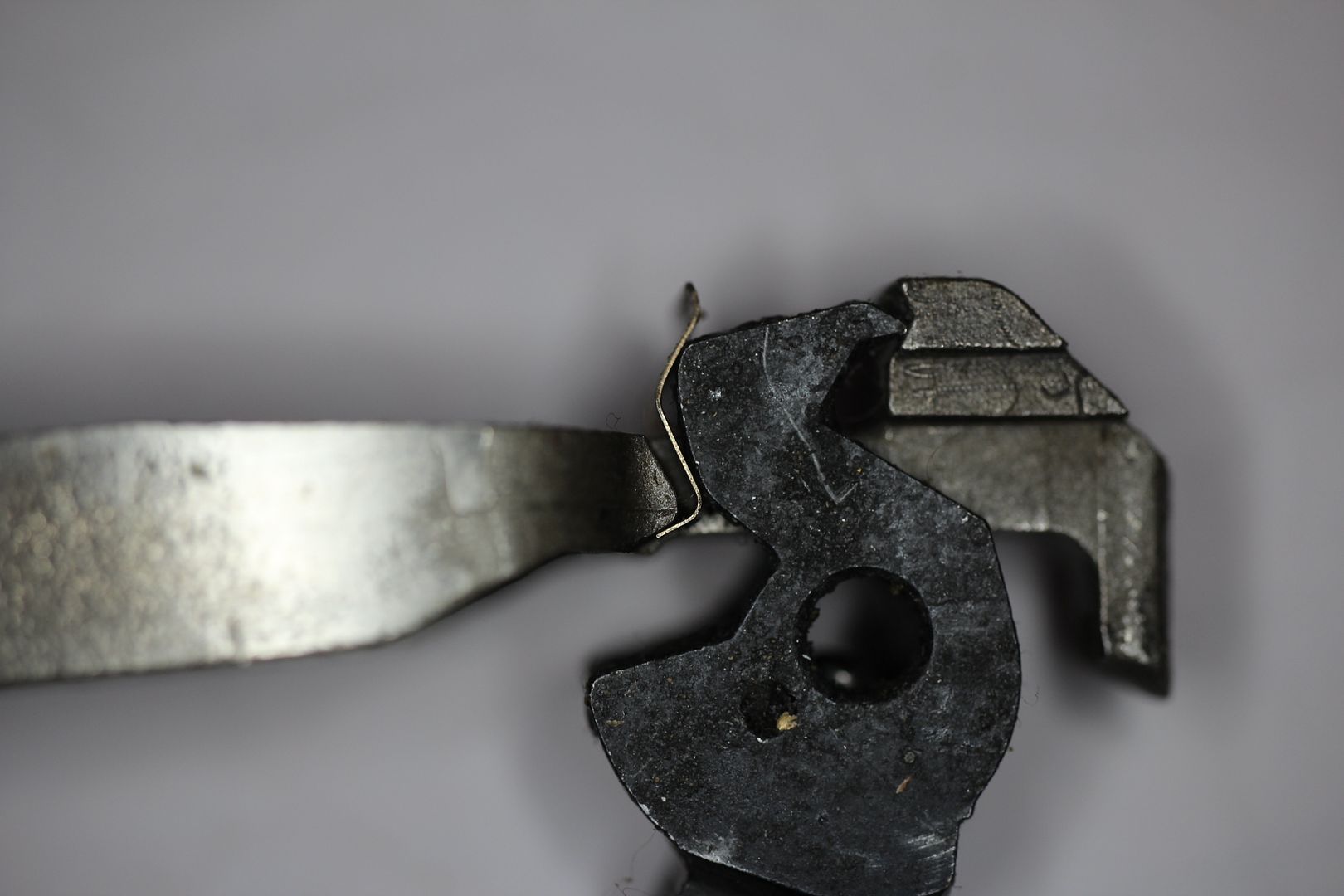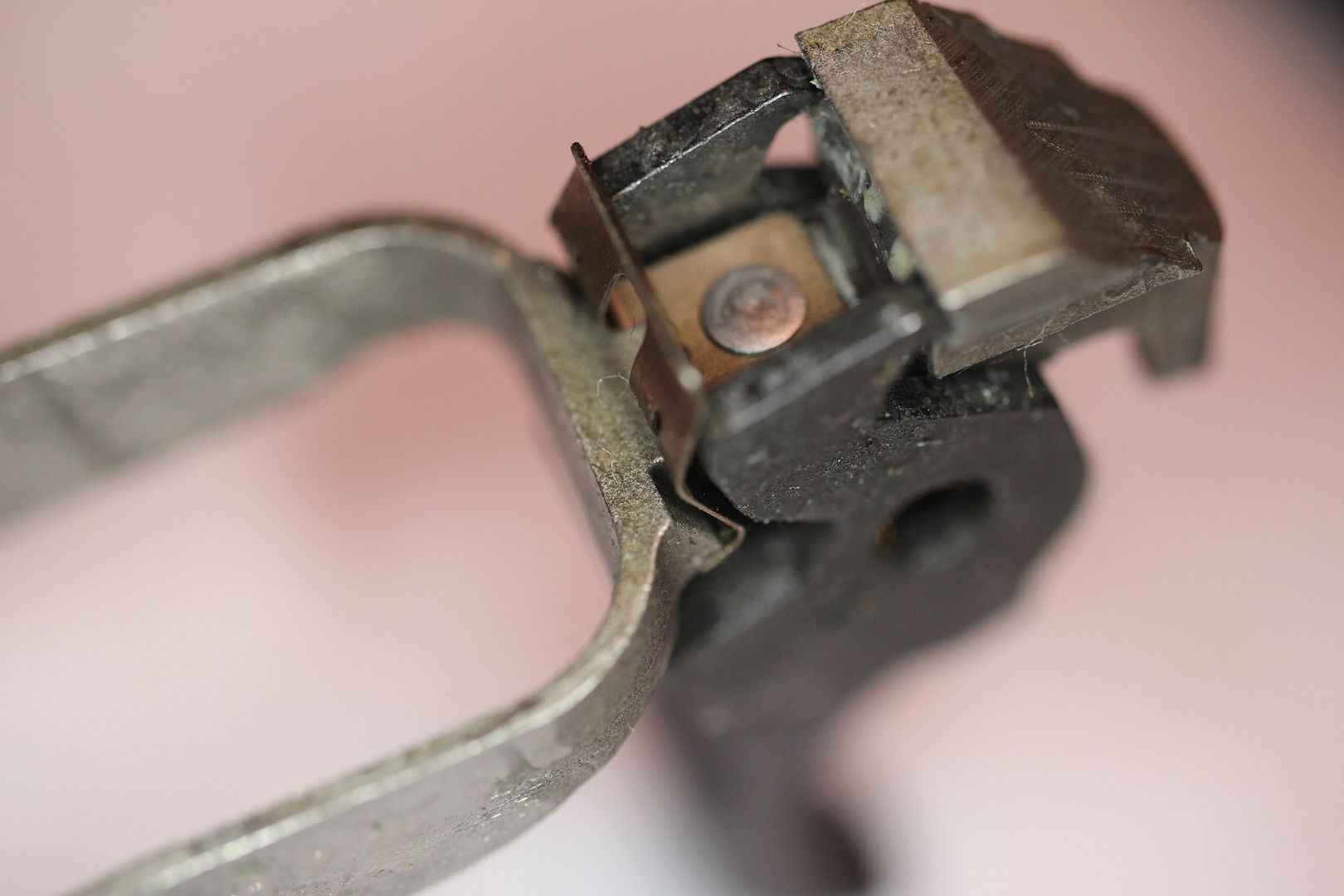I really wish you would have asked about this before undertaking modifications to the gun.
The trigger 'click' you describe is a well known and very common issue with these guns. It is caused by a damaged or bent trigger play spring. That's the tiny copper colored leaf spring affixed to the drawbar with a tiny rivet. That spring is easily bent, often by overzealous cleaning methods or improper handling. The trigger play spring's purpose is to apply forward pressure to the trigger hooks thereby keeping the trigger in close contact with the drawbar. One can instantly wreck that spring by pressing forward on the trigger with the hammer cocked. In doing so, the trigger hooks will bend the spring rearward and introduce a bunch of slack at the trigger/drawbar interface causing the dreaded annoying trigger click.
Here's a pic representing the relationship of these parts. Note the trigger play spring in the pic is no good and needs to be replaced.

And from another angle... See how the lower legs of the spring are not in contact with the drawbar. That spring has been bent out of shape and back too many times. It cannot be made to work and needs replacing.

When that spring is bent, the trigger tends to flap about and the hooks ride upward out of the drawbar notch. The click is observed when one applies rearward pressure to take up the trigger slack and the hooks 'snap' into the drawbar notch.
The proper corrective action here would have been the pull the drawbar and replace the trigger play spring. However now that you have modified the hammer's pick-up notch along with the trigger & drawbar, I don't know. My sense is that the problem is merely covered up...like painting over rust, it'll be back. Modifying the hammer notches or sear angles should never be undertaken lightly and then only with the proper fixtures, tooling & stones and knowledge of course.
I also strongly recommend you re-install the firing pin safety mechanism. Without it the gun is no longer drop safe and can be bumped off with a sufficient strike to a cocked hammer.
I apologize if I sound overly critical in all this but I think this is of such import I ought to speak up. I don't want anything bad to happen.
Cheers
Bill
